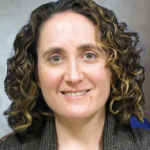The diagnosis of FDIA is difficult to make and can often take several months. Investigation involves a collaborative effort between child abuse specialists, child-protective services, psychiatry, and law enforcement. During the investigation, the child is often removed from the care of the offender. The offender may end up incarcerated, however the actual treatment is psychiatric, though no medication, behavioral therapy, psychotherapy, or multidisciplinary approach has proven effective. Only about 10 percent of offenders receive ongoing therapy.5 Most cases result in the separation of the child from the offender.5
Explore This Issue
ACEP Now: Vol 43 – No 05 – May 2024Emergency physicians can play an important role in the diagnosis by paying attention to potential red flags when evaluating children who repeatedly present for the same problem. These include:5-7
- Extensive but inconsistent medical history in the patient (victim), often with symptoms that do not correlate
- Frequent cycles of reporting improvement and worsening of symptoms
- Tendency to evade questions and change clinicians when a health professional explores other causes than a medical diagnosis
- Eagerness to have the victim undergo medical examinations, tests, and procedures
- Intense emotional reactions when a health professional doesn’t provide or confirm the diagnosis
- Development of new symptoms when testing does not lead to a diagnosis
- Long history of medical visits and hospital stays
- Resolution (often complete) of symptoms while hospitalized, but returns while discharged
Case outcome: The registered nurse said she witnessed the mother adding a white substance to the formula. That bottle was confiscated, and the nurse gave the child a different bottle. Child protective services and law enforcement were consulted. The patient’s mother was only permitted to have supervised visits with the child in the hospital while the investigation was underway. The formula was analyzed and was found to have an excessively high sodium concentration. The child’s sodium level quickly returned to normal and remained that way while in the hospital.

Dr. Rozzi is an emergency physician, medical director of the Forensic Examiner Team at WellSpan York Hospital in York, Pennsylvania, and secretary of ACEP’s Forensic Section.
 Dr. Riviello is chair and professor of emergency medicine at the University of Texas Health Science Center at San Antonio.
Dr. Riviello is chair and professor of emergency medicine at the University of Texas Health Science Center at San Antonio.
References
- Mayo Clinic. Factitious disorder. 2019.
- Sousa FD, Kanomata EY, Feldman RJ, et al. Munchausen syndrome and Munchausen syndrome by proxy: a narrative review. Einstein (Sao Paulo).2017;15(4):516-521.
- American Psychiatric Association. Diagnostic and Statistical Manual of Mental Disorders, Fifth Edition. Fifth Edition. Arlington, VA: American Psychiatric Association; 2013. 324-326.
- Yates G, Bass C. The perpetrators of medical child abuse (Munchausen Syndrome by Proxy) – A systematic review of 796 cases. Child Abuse Negl.2017;72:45-53.
- Abdurrachid N, Gama Marques J. Munchausen syndrome by proxy (MSBP): a review regarding perpetrators of factitious disorder imposed on another (FDIA). CNS Spectr. 2022;27(1):16-26.
- Gillette H. Falsifying and illness: what is Munchausen by proxy. Psychiatry Central. 2022 Apr 29.
- Hettler J, Munchausen syndrome by proxy. Pediatric Emergency Care. 2002;18(5):p 371-374.
Pages: 1 2 3 | Single Page




One Response to “Tips for Diagnosing Factitious Disorder Imposed on Another”
July 29, 2025
May BerryYou are not counting the millions of children being abused by FDIA in the family courts due to inadequately educated and trained evaluator and assessments being conducted on both parents (male and female alike) perpetrating this type of ailment abuse! Shame on you so called Medical Healthcare Professionals for singling out WOMEN, when just as many heinous acts of rigid traumatizing males are committing atrocities on so many children annually and your professional APA community is to blame for allowing sub par doctoring to continue in family courtrooms across the country… it’s colluding with these child abusers! Take the “Most are WOMEN” comment out of your definition! Its deceptively inaccurate! Siting the 2022 NY Blue Ribbon Commission on FDIA Child Abuse in the Family Courts for secondary gains (financial victimhood sympathy, best parent actor role–accolades and to gain custody of children).